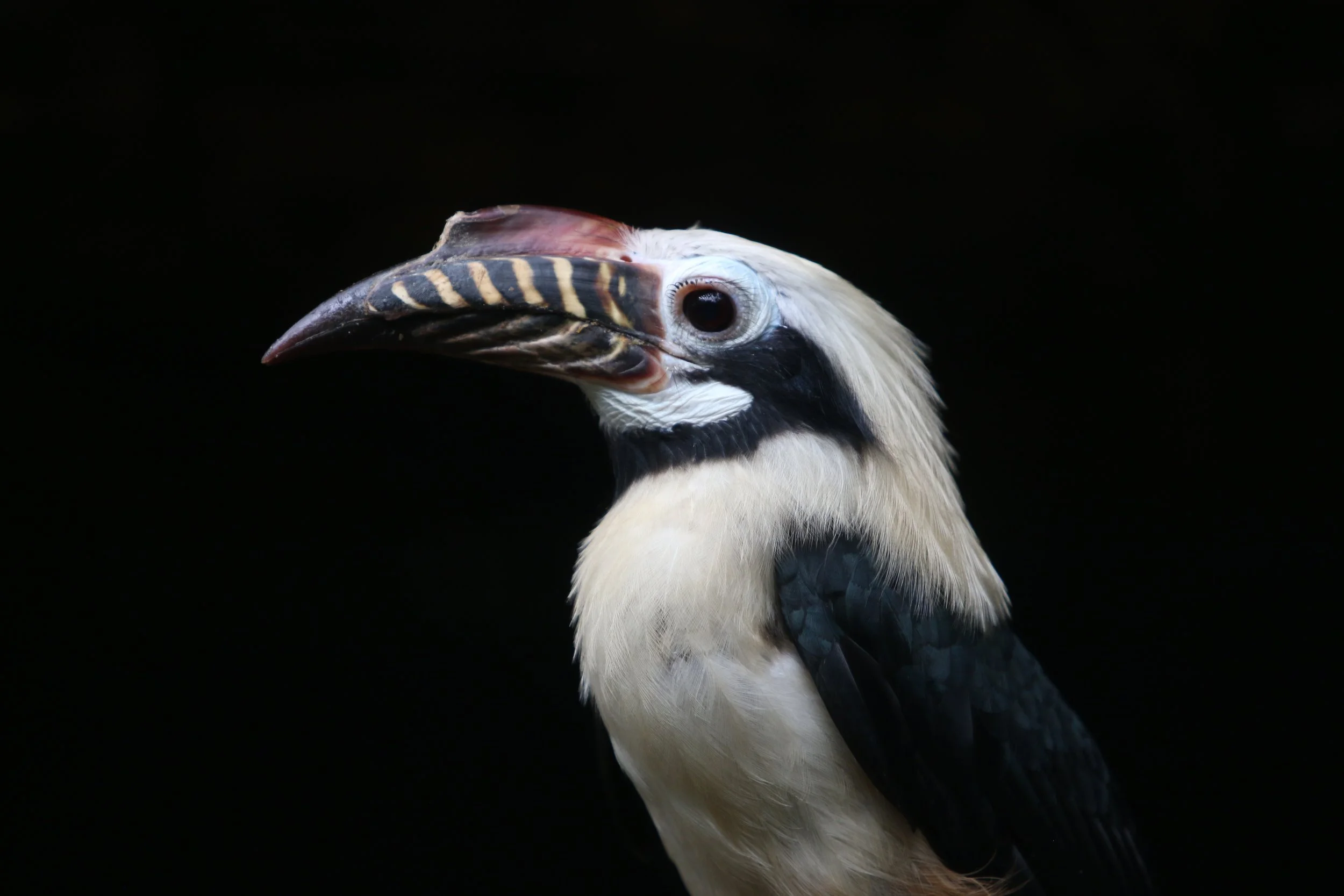Saving West Visayan Endangered Species
Blueprint
ASSESS
The Negros Bleeding-heart Pigeon (Gallicolumba keayi) and Rufous-headed or Walden’s Hornbill (Rhabdotorrhinus waldeni, known locally as the Talarak), have been assessed as Critically Endangered since 1994 in the IUCN Red List of Threatened Species. The Visayan or Tarictic Hornbill (Penelopides panini) has been assessed as Endangered since 2000. The Visayan Warty Pig (Sus cebifrons) has been assessed as Critically Endangered since 1996, and the Philippine Spotted Deer (Rusa alfredi) as Endangered since 2016. The Philippine Biodiversity Management Bureau’s National List of Threatened Fauna has included all five species as Critically Endangered since 2019.
PLAN
The Talarak Foundation Inc. (TFI), which focuses on Philippine endemics, hosted a West Visayan Conservation Planning Workshop in 2019 to mobilise information and galvanise action on the “West Visayan Big Five” for potential reintroduction to the wild. The workshop was facilitated by the IUCN Conservation Planning Specialist Group and included over 80 representatives from local government, indigenous peoples’ communities, local NGOs, as well as international experts from IUCN specialist groups, and zoos. Using the Assess to Plan process and the One Plan Approach, the workshop gathered information about the status of in situ and ex situ populations, habitat requirements, threats, and any current government and NGO programs for each species. Following all discussion, a multi-species conservation strategy plan was produced — the first of its kind in the Philippines.
ACT
Working with the City of Bayawan, TFI developed a co-management agreement for the 300-hectare Bayawan Nature Reserve, a former agroforestry site, to foster native tree species and provide a safe haven for reintroduction of Negros Island endemic species. The Bayawan Nature Reserve is a secondary forest and a watershed for Bayawan City. The reserve was developed by TFI to accommodate the native biodiversity of the area, newly introduced (formerly extirpated) species from the breeding centres, and also enhance community livelihoods. In addition, a partnership with NASA (USA) analysed trends in land use and habitat changes for the Visayan Spotted Deer and Visayan Warty Pig over the past 30 years, and projected how these past changes are likely to impact the future for these species.
TFI also signed a Memorandum of Agreement with the Province of Negros Occidental to ensure protection of Negros Forest Park in Bacolod City. Here, ex situ aviaries and mammal enclosures were repaired and new aviaries constructed. The University of Philippines Los Baños College of Veterinary Medicine conducted research and gave a curator workshop for TFI staff at Negros Forest Park. In 2019, after nine years of ex situ work, Negros Forest Park saw its first successful captive breeding of Rufous-headed Hornbill.
The Bristol Zoo (UK) funded a TFI-led camera trapping project in Victorias, North Negros Natural Park, to search for any remnant Negros Bleeding-heart Pigeon populations, as well as evidence of other West Visayan species. TFI has also been collaborating with the Katala Foundation to learn about their successes on Rasa Island, where a population of Philippine or Red-vented Cockatoo (Cacatua haematuropygia) — another Philippine endemic assessed as Critically Endangered — was restored.
Results
Building on the plans, information, and networking connections from the 2019 Planning Workshop, TFI started a reintroduction programme at the Bayawan Nature Reserve, focusing first on Visayan Warty Pigs and Visayan Spotted Deer. This is the first conservation reintroduction on the island of Negros, and the first-ever conservation translocations of these species. Since 2020, 22 Visayan Warty Pigs and 39 Visayan Spotted Deer have been released into a 300-hectare soft-release field site. The animals have adapted well and the next step will be to allow them access to a larger area. Among these release groups, TFI recorded five births in the wild since the reintroductions, a strong indication that the animals are settling in successfully. The project also includes a pilot study to test photo-identification techniques to monitor reintroduced deer remotely. In addition, four Visayan Hornbills have been introduced into the reserve each outfitted with GPS radio tags. Improved facilities for captive populations, continued camera trapping and wild habitat research, combined with extensive outreach to local communities, are together laying the groundwork for additional reintroductions. Hopefully, the Philippine Cockatoo (Cacatua haematuropygia), another Critically Endangered species, will also benefit from these efforts soon.
Visual & Audio References
© Toledo Zoo, Anna Heath, Talarak Foundation Inc
Collaborations
Major
Partners
Talarak Foundation Inc.
IUCN SSC Conservation Planning Specialist Group, Wild Pig Specialist Group, and Hornbill Specialist Group
Synchronicity Earth
Chester Zoo
Mandai Nature (formerly Wildlife Reserves Singapore)
Additional
Contributors
Provincial Government of Negros Occidental
Government of Bayawan City
Zoologische Gesellschaft für Arten und Populationsschutz (ZGAP)
Plzen Zoo
Zoo Liberec
Jerusalem Zoo
North Carolina Zoo
Bristol Zoo
Asian Species Action Partnership
Planckendael Zoo
SMART Communications
Donors
Don Papa Rum, Three Hens Wine, Energy Development Corp
Additional Resources
Content Updated as of 5/2/2022














